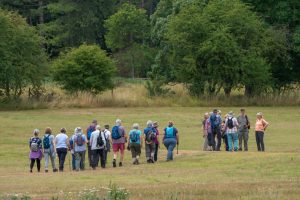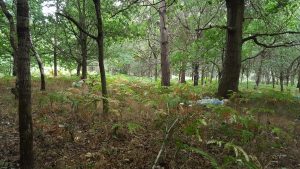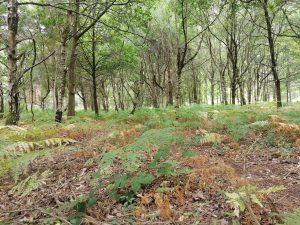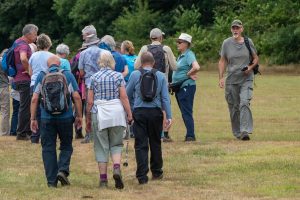Peterborough Ramblers go Forest Bathing: opening pictures

I have had two pictures in from Ian Crosby relating to our walk at Wakerley Wood on 30 July 2022. I do hope we have some more – please email Tony@schools.co.uk if you took any.
Meanwhile I am re-running the notes that were previously posted ahead of this walk, in case you missed the build up.
What does the Forestry Commission say about forest bathing?
“This Japanese practice is a process of relaxation; known in Japan as shinrin yoku.
The simple method of being calm and quiet amongst the trees, observing nature around you whilst breathing deeply can help both adults and children de-stress and boost health and well-being in a natural way.

Below are some top tips and activities to get your meditation journey started.
This picture on the left is from Gina Hall.
The picture below is from Simon Bradford.
Tips for beginners
- Turn off your devices to give yourself the best chance of relaxing, being mindful and enjoying a sensory forest-based experience.
- Slow down. Move through the forest slowly so you can see and feel more.
- Take long breaths deep into the abdomen. Extending the exhalation of air to twice the length of the inhalation sends a message to the body that it can relax.
- Stop, stand or sit, smell what’s around you, what can you smell?
————
- Take in your surroundings using all of your senses. How does the forest environment make you feel? Be observant, look at nature’s small details.
- Sit quietly using mindful observation; try to avoid thinking about your to-do list or issues related to daily life. You might be surprised by the number of wild forest inhabitants you see using this process.
- Keep your eyes open. The colours of nature are soothing and studies have shown that people relax best while seeing greens and blues.
- Stay as long as you can, start with a comfortable time limit and build up to the recommended two hours for a complete forest bathing experience.”
What does the National Trust say about Forest Bathing?
“Forest bathing is no more complicated than simply going for a wander in your local woods or park. The only difference is that rather than walking for exercise, you take the time to really focus on the natural world around you: from the rays of sunlight catching the leaves to birdsong echoing from the canopy. Here are some tips to get you started.
- Pick a quieter time of day. There’ll probably be fewer people around if you go to the woods in the early morning or later in the evening. Depending on your schedule you could also try weekday afternoons (outside of the school holidays).
- Try turning off your electronic devices. An hour or two of digital detoxing will help you to slow down and focus on your surroundings.
- Take your time. Wandering slowly through the trees can be very meditative, or you can settle down on a log to really take in your surroundings. If you stay still and quiet enough you’re also more likely to see wildlife, such as deer and birds.
- Use all of your senses. When did you last touch a tree trunk and feel the rough bark, or notice the way sunlight catches the leaves, or try to pick out all the different types of birdsong around you?
- Pay attention to your breathing. This is a great way to relax and clear your mind, so you can focus on what’s around you. Try closing your eyes and taking ten slow, deep breaths in and out, then gently open your eyes and bring your awareness back to the forest.
- Stay as long as you feel comfortable. Two hours is the recommended time for a forest bathing session, but if you’ve got a busy schedule then even just 10 minutes in nature can help you to feel refreshed.”
